On foot through the woods to Lord Ayyappa’s hill shrine

Mail This Article
Eighteen is a significant number in Sabarimala pilgrimage. The Sabarimala temple is located in the middle of 18 hills. Swami Ayyappa, who was the prince of Pandalam, had meditated in Sabarimala after killing the demoness Mahishi. Now, pilgrims have to climb 18 steps to reach the Sannidhanam, the sanctum sanctorum. Devotees who arrive at the temple with ‘irumudi’ – a bag with two compartments – are believed to have traversed all the ‘14 worlds.’ Another belief is that the 18 steps signify the 18 hill deities - devotees believe that in the past there were temples on top of each of the surrounding hills.
Pilgrims undertaking the trip for the first time – ‘kanni Ayyappas’ – pray at the Sastha temple and Vavar’s mosque in Erumeli and head to Pamba, hoping to reach there by evening. This is the traditional path to Sabarimala, taking the rough and dangerous route through the forest.
This trip starts from the Peroor stream and till Erumbunnikkara, it is a smooth affair - an uneventful journey outside the forest. From Erumbunnikkara, the pilgrim steps into the wooded area. The path up to Cheriyanavattom is under forest cover. A few hills have to be climbed and a grassland should be covered. The next point is Arasumudi. After that, comes Kalaketty.
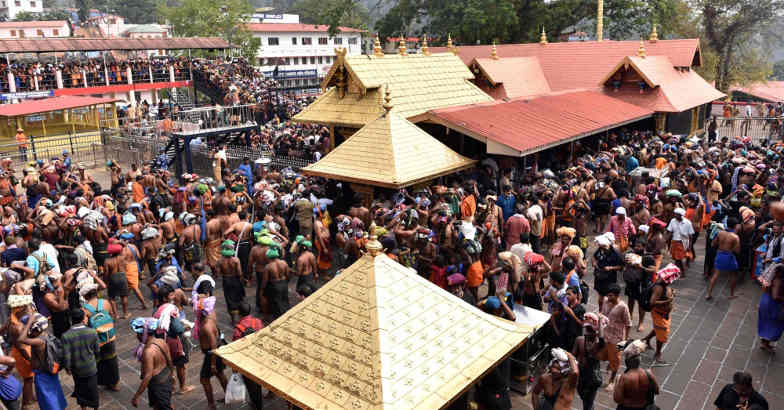
When Ayyappa was a youngster, he was called by the name ‘Manikandan’. It is believed that during the battle between Manikandan and Mahishi, lord Siva came to the place to watch. The spot where Siva tied the bull on which he had traveled is now called ‘Kalaketty’.
The path continues to Azhutha river, where the devotees take a dip and collect stones, which they keep safely in their bag. Most pilgrims spend the night on the river bank.
The walk from Azhutha to Valiyanavattom is the most significant of the traditional path. The steep climbs covering the 18 hills are exhausting. There are veteran pilgrims who can relate by heart the names of all these hills: Sabarimala, Ponnambalamedu, Gowndanmala, Nagamala, Sundaramala, Chittambalamedu, Khalgimala, Mathangamala, Mayiladummedu, Sripadamala, Thevarmala, Nilackalmala, Thalapparamala, Karimala, Neelimala, Puthasserimala, Kalakettymala and Enchipparamala. The Makarajyoti can be witnessed from all these hills.
The stone taken from Azhutha river signifies a legend. It is deposited in Kallidamkunnu - Manikandan is believed to have buried Mahishi’s body here by covering it with stones and soil.
From Kallidamkunnu, the route leads to Mukkuzhy. Some pilgrims stay for the night there. Others take a short rest and resume their journey. From Mukkuzhy, pilgrims have to cross the stream called Kariyilamthodu to start their climb up the Karimala.
It is a difficult trek to the top of the hill. Only those with a strong will power as well as body can manage this climb. After conquering the ‘black hill’, the pilgrims pass along Cheriyanavattom to reach the banks of the Pamba river.
Lord Ayyappa is believed to have carried out the last rites of the soldiers who sacrificed their lives for him in battle at the Triveni in the Pamba. Pilgrims take a dip in the river remembering the concern shown by Ayyappa towards his subjects.
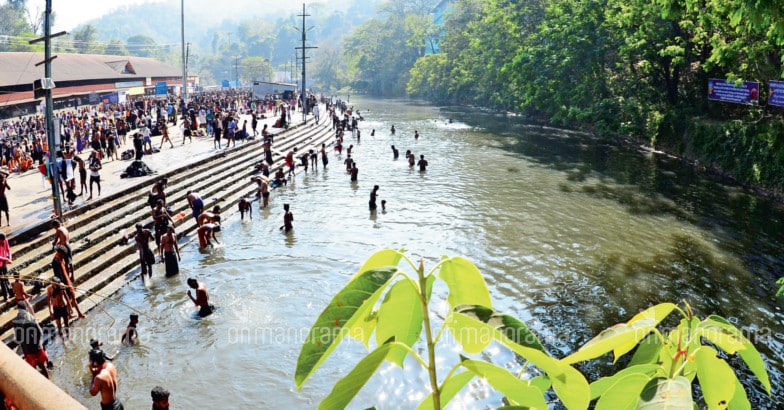
At Triveni, three rivers join together - Pamba, Kallar and Njunungar. This union of rivers is believed to make Pamba holy. Around 5 crore pilgrims reach Sabarimala during the three-month pilgrim season every year, all of whom step into the Pamba on way to the shrine. As the Ganges is to devotees all across India, the Pamba has been considered a holy river by the people of Kerala since long ago.
To make the climb up the Sabarimala obstacle free, pilgrims break coconut in front of the Ganapathy temple at Pamba. They also reach the office at the temple to purchase coupons for ‘appam’ and ‘aravana’, the ‘prasadam’ of the Sabarimala temple.
Ahead of the pilgrims lie cement steps and later a mud path. After that, Swami Ayyappan road starts. The first stop is at a structure built in honor of the king of Pandalam, who enjoys the status of being the father of Ayyappa. The path ahead is paved with stones, bare earth and at some places with cement. This is the climb up the Neelimala, the first of the two steep hills to be covered to reach the shrine. The other is the incline up the Appachimedu. Myth says that Ayyappa’s aide Kaduravan kept evil spirits tied to this spot. The pilgrims carrying the ‘irumudi’ make an offering here and continue their journey.
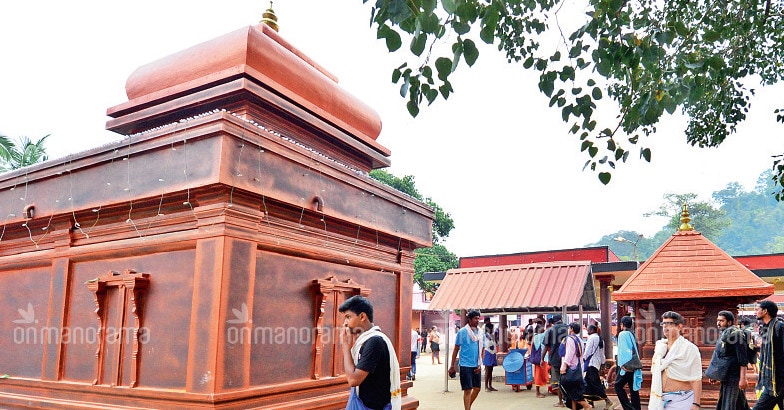
The pilgrims shout and pray to Ayyappa by prefixing his name with the names of each of the 32 items in the ‘irumudi’.
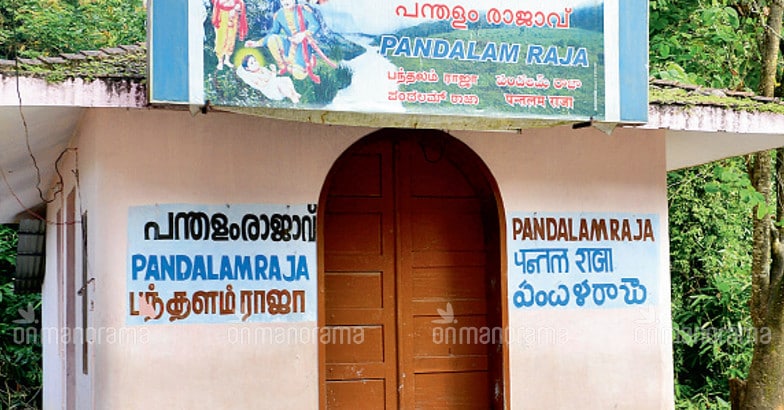
The strained and stretched pilgrims soon reach Sabaripeedom. Sabari, a woman mendicant mentioned in the Ramayana, had her ashram here. This is a spot where the Ramayana and the legends associated with Sabarimala merge. Pilgrims make an offering here also and move on to Marakkoottam.
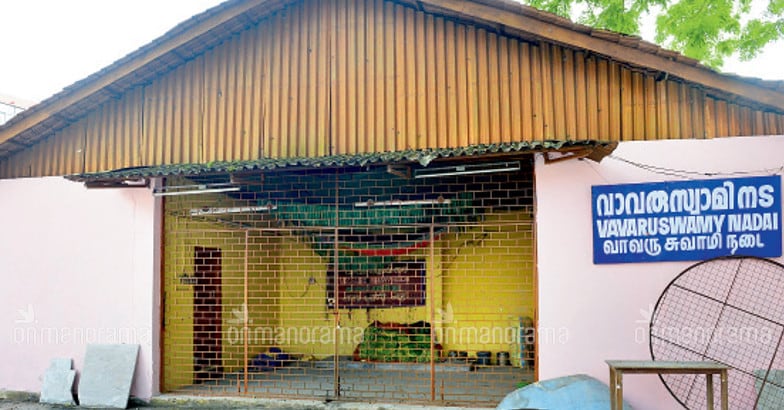
From here, the Swami Ayyappan Road bifurcates. Towards the left is the Chandranandan Road. The virtual queue is in force along this route. Take the right turn and you head towards Saramkuthi. According to legend, Ayyappa and his forces abandoned their weapons here after defeating the army led by the bandit Udayanan.
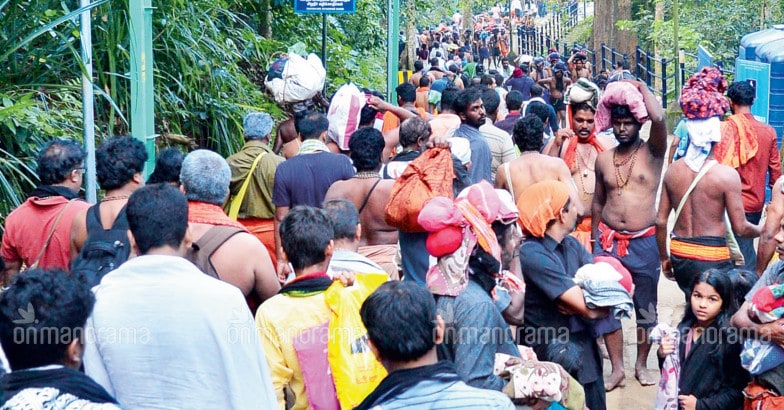
First-time pilgrims coming from Erumeli shun the arrows which they carried as a ritual here before heading to Sannidhanam, the shrine.
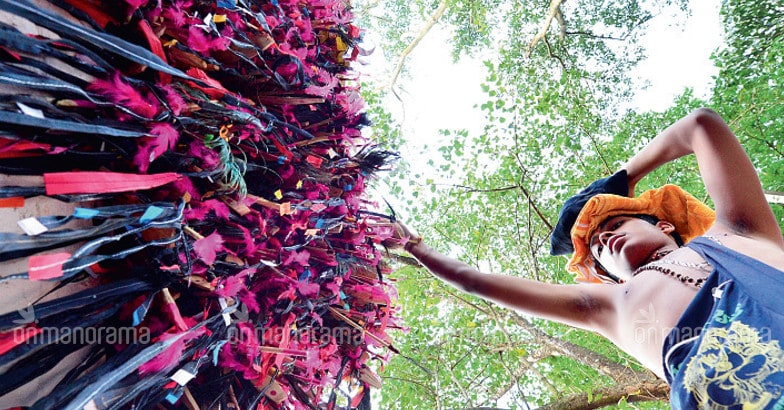
Ayyappa had promised Malikapurathamma, whose temple is nearby, that he would marry her when no first-time pilgrim undertakes the trip to Sabarimala. The large number of arrows at Saramkuthi indicates the eternal wait of Malikapurathamma.
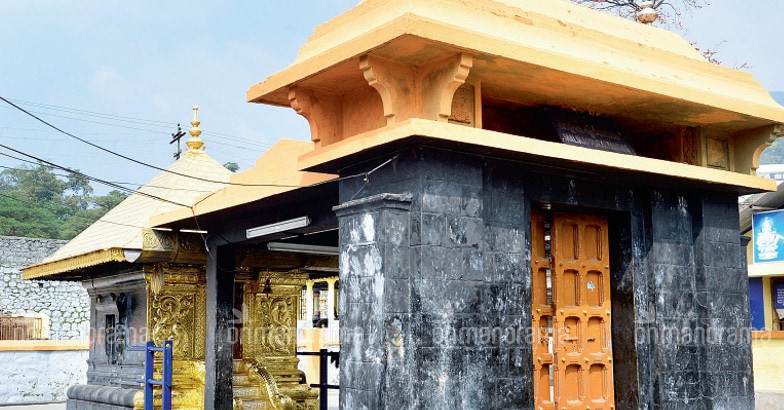
From Saramkuthi, a flat path leads to the shrine. The Chandranandan road also joins this stretch.
Right in front are the 18 holy steps. They represent the four vedas, six sciences, four methods and four castes. Climb the steps made of black stone and the wisdom of ‘Tatwamasi’ – a term from the Upanishads, roughly meaning ‘you are that’ – dawns on pilgrims at the seat of lord Ayyappa.


